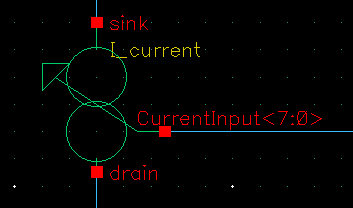The Cgd (gate-drain parasitic capacitance) in a CMOS common-source amplifier plays a significant role, especially at high frequencies.
This capacitor is crucial because it couples the output back to the input, introducing a negative feedback loop, which affects the gain, bandwidth and phase response of the amplifier.
Common Source Stage
The schematic of a standard common source amplifier including the Cgd parasitic capacitor is:

The gate-drain capacitor Cgd is intrinsic, produced from the physical overlap between the gate and drain terminals of the MOSFET. This overlap is inevitable and it is more prominent in short-channel technologies. As CMOS technologies scale down, the gate oxide becomes thinner, which increases the capacitance per unit area. However, the shorter channel lengths also reduce the overall overlap capacitances.

The Miller Effect increases the influence of the gate-drain capacitance, increasing the effective input capacitance seen at the input.
Due to the voltage gain of the amplifier, the gate-drain capacitance appears larger than the gate-source capacitance.
The effective capacitance due to Cgd, also known as Miller capacitance, is expressed as: where Av is the voltage gain of the amplifier.
![]()

Effects on the Frequency Response
The increased input capacitance due to the Miller reduces the cut-off frequency (f_3dB) and also the bandwidth of the amplifier. The input resistance, along with the Miller capacitance, creates a low-pass filter that limits the frequency response.

As a result, the gate-drain capacitance lowers the gain of the amplifier at high frequencies. As the frequency increases, the impedance of the capacitance decreases and therefore, part of the input signal is bypassed through the capacitor impedance. Additionally, Cgd introduces phase lag, which can further degrade the performance at high frequencies.
The input impedance is very high (near infinite) at DC, but it decreases at high frequencies, as the impedance of the Miller capacitance becomes smaller.
Cascode Stage
In a common-source amplifier with a cascode stage, the addition of a cascode transistor provides a significant improvement in performance, especially in mitigating the effects of Cgd.
Cascoded topologies are often used to mitigate the reduction of bandwidth and a gain degradation due to the gate-drain capacitance.
The schematic of a common source stage including a cascode transistor can be seen in the schematic below:

The voltage gain from the gate of the M2 cascode MOSFET is very low, nearly zero, reducing the Miller multiplication effect of Cgd. Indeed, the Cgd of M2 can be practically neglected.
In a cascode configuration, the voltage gain from the gate to drain of the common-source transistor (M1) is close to zero. This is because the drain of M1 is held at a relatively constant voltage due to the action of the cascode transistor M2, which acts as a buffer.
![]()
Improved Bandwidth and Gain
The high frequency roll-off caused by Cgd in the basic common-source amplifier is significantly reduced in the cascode configuration. The cascode arrangement allows the amplifier to maintain gain over a much wider frequency range, increasing the cut-off frequency and enhancing the overall bandwidth.
- The cut-off frequency may be higher or similar
- The output impedance may increase with the cascode, which means a higher voltage gain.
- The transit frequency (frequency at which the current gain drops to 1) will be much higher in a cascode configuration.
Additional Poles
With the introduction of the cascode transistor, the system now has two poles, one at the output of the common-source transistor and one at the output of the cascode transistor. These poles are typically far apart in frequency, with the higher pole (associated with the cascode stage) being pushed to a much higher frequency.

As a conclusion, the Cgd parasitic capacitance has a degradation effect on high-frequency performance in basic CS amplifiers, but the addition of a cascode transistor can greatly reduce these effects, resulting in improved gain, bandwidth, and stability.




